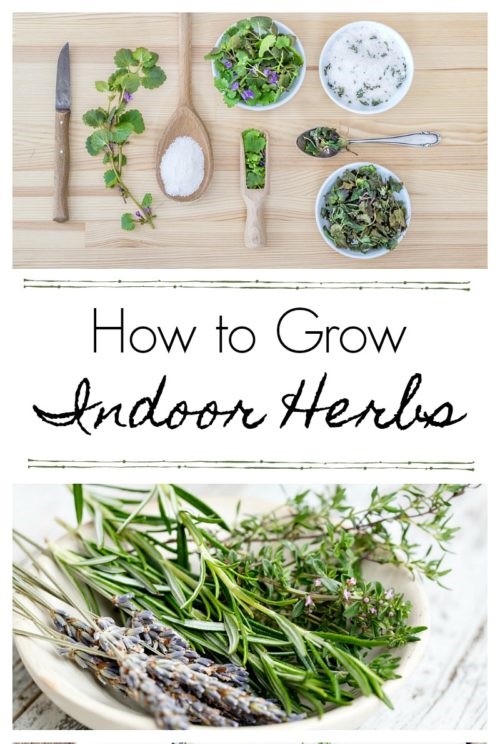Grow Herbs Indoors: Easy Steps

Have you ever dreamed of having fresh herbs at your fingertips, even in the heart of winter? Imagine snipping a sprig of basil for your pasta or a few leaves of mint for your tea, all from the comfort of your own home. Growing herbs indoors is not only possible but also incredibly rewarding. Let's dive into the world of urban herb gardening and discover how to grow herbs indoors with ease.
Why Grow Herbs Indoors?
Growing herbs inside your home offers numerous benefits. Firstly, it ensures a year-round supply of fresh, flavorful herbs. Secondly, it adds a touch of greenery to your living space, enhancing its aesthetic appeal. Lastly, indoor herb plants can improve air quality, making your home a healthier place to live.
Getting Started: Essential Tools and Supplies
Before you embark on your indoor herb garden journey, you'll need a few essential tools and supplies. These include:
- Pots or Containers: Choose pots with good drainage to prevent root rot.
- Potting Soil: Opt for a well-draining, organic potting mix.
- Herb Seeds or Seedlings: Decide whether you want to start from seeds or purchase seedlings.
- Light Source: Natural sunlight is ideal, but grow lights can also be used.
- Watering Can: A small watering can with a fine nozzle is perfect for herbs.
Choosing the Right Herbs for Indoor Growing
Not all herbs thrive indoors. Some of the best herbs for indoor growing include:
- Basil: This versatile herb loves sunlight and warmth.
- Mint: Easy to grow and thrives in partial shade.
- Parsley: A biennial herb that prefers bright, indirect light.
- Chives: A hardy herb that can tolerate a range of conditions.
- Rosemary: This woody herb needs plenty of light and well-draining soil.
Step-by-Step Guide to Growing Herbs Indoors
Step 1: Select Your Herbs
Choose herbs that suit your culinary preferences and growing conditions. For example, if you have a sunny windowsill, basil and rosemary are excellent choices.
Step 2: Prepare Your Containers
Fill your pots with a well-draining potting mix. Ensure the pots have drainage holes to prevent waterlogging.
Step 3: Plant Your Herbs
If using seeds, follow the packet instructions for planting depth and spacing. If using seedlings, gently remove them from their nursery pots and plant them at the same depth as they were originally growing.
Step 4: Provide Adequate Light
Most herbs need at least 4-6 hours of sunlight per day. Place your pots near a south-facing window for optimal light. If natural light is limited, consider using grow lights.
Step 5: Water Regularly
Herbs prefer consistently moist soil but dislike being waterlogged. Water your herbs when the top inch of soil feels dry. Use a watering can with a fine nozzle to avoid overwatering.
Step 6: Fertilize Occasionally
Herbs don't require much fertilizer, but a light application of organic fertilizer every few months can boost growth.
Step 7: Harvest and Enjoy
Once your herbs are established, you can start harvesting. Pinch off the top few leaves or snip stems as needed. Regular harvesting encourages bushier growth.
Herb Growing Tips for Success
- Rotate Your Pots: To ensure even growth, rotate your pots regularly so all sides of the plant receive equal light.
- Prune Regularly: Regular pruning encourages bushier growth and prevents leggy stems.
- Monitor for Pests: Indoor herb plants can attract pests like aphids and spider mites. Inspect your plants regularly and treat any infestations promptly.
Troubleshooting Common Issues
Yellowing Leaves
Yellowing leaves can indicate overwatering or underwatering. Check the soil moisture and adjust your watering schedule accordingly.
Leggy Growth
Leggy growth is often a sign of insufficient light. Move your plants to a brighter location or supplement with grow lights.
Slow Growth
Slow growth can be due to poor soil, inadequate light, or insufficient nutrients. Ensure your herbs have the right growing conditions and consider fertilizing if necessary.
Conclusion
Growing herbs indoors is a rewarding hobby that brings fresh flavors and a touch of nature into your home. With the right tools, a bit of patience, and these easy steps, you can create a thriving indoor herb garden. So, why not give it a try? Your taste buds and your home will thank you!
FAQs
1. What are the best herbs to grow indoors?
Some of the best herbs to grow indoors include basil, mint, parsley, chives, and rosemary. These herbs are relatively easy to care for and thrive in indoor conditions.
2. How much light do indoor herbs need?
Most herbs need at least 4-6 hours of sunlight per day. Place your pots near a south-facing window for optimal light. If natural light is limited, consider using grow lights.
3. How often should I water my indoor herbs?
Herbs prefer consistently moist soil but dislike being waterlogged. Water your herbs when the top inch of soil feels dry. Use a watering can with a fine nozzle to avoid overwatering.
4. How do I harvest indoor herbs?
Once your herbs are established, you can start harvesting. Pinch off the top few leaves or snip stems as needed. Regular harvesting encourages bushier growth.
5. What should I do if my indoor herbs are not growing well?
If your indoor herbs are not growing well, check the growing conditions. Ensure they have adequate light, well-draining soil, and consistent moisture. Consider fertilizing if necessary and monitor for pests.


For more detailed information on indoor gardening, you can visit The Spruce and Gardener's Supply Company. These resources provide additional tips and expert advice on growing herbs indoors.
0 Response to "Grow Herbs Indoors: Easy Steps"
Post a Comment